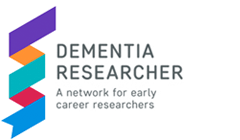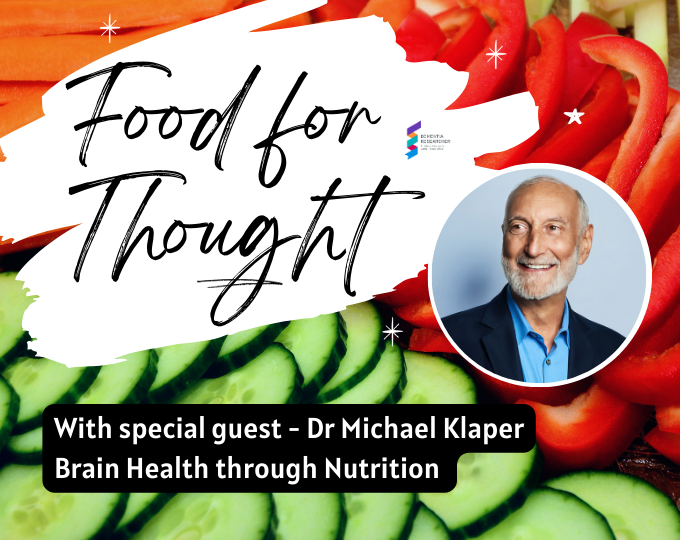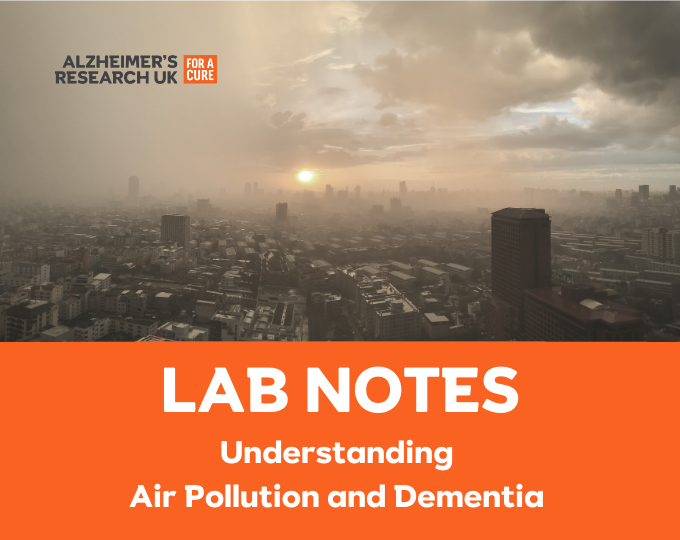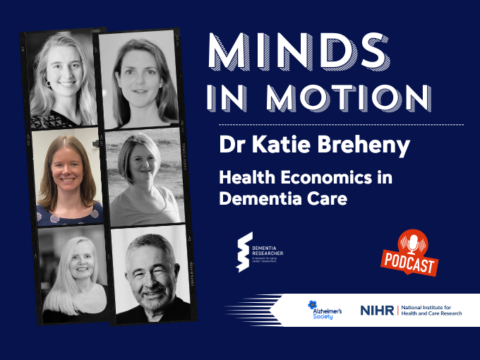In this episode of the Dementia Researcher Podcast, guest host Dr Sam Moxon is joined by Dr Adam Schuller, Dr Savannah Rocha-Wrigley, and Megan Hager from Colorado State University's Tjalkens Lab to explore the significant yet often overlooked impact of environmental toxins on dementia and neurodegenerative diseases.
This fascinating discussion sheds light on how substances such as pesticides, heavy metals, wildfire smoke, and air pollution can trigger changes in glial cells, such as astrocytes and microglia, which may lead to dementia. The experts share insights into groundbreaking experimental models, imaging technologies, and the importance of early intervention and prevention strategies to reduce toxin-related risks.
Key Topics:
- Defining environmental toxins and their relevance to dementia
- Role of astrocytes and microglia in neurodegeneration
- Translational neurotoxicology models
- Advanced AI imaging and analysis techniques
- Preventative strategies to mitigate environmental risks
Voice Over:
The Dementia Researcher Podcast, talking careers, research, conference highlights and so much more.
Dr Sam Moxon:
Welcome to the Dementia Researcher Podcast. Today, we explore a crucial area of dementia research, the environmental link to neurodegenerative diseases through the lens of toxin exposure and glial cell involvement.
I'm Dr. Sam Moxon, your guest host for this week's show. I'm a research fellow at the University of Birmingham where my work focuses on bio printing human tissues to help understand diseases like dementia. Now, given my research background, I'm particularly excited about today's topic because we're going to be exploring some of the innovative and important work being conducted at Colorado State University.
This groundbreaking research sits the intersection of environmental science, toxicology, and neuroscience, working to uncover how environmental toxins affect the brain and investigate potential strategies to reduce their harmful impacts, ultimately aiming to protect cognitive health.
Joining me today are some brilliant experts from Colorado State University, Dr. Adam Shuller, Dr. Savannah Rocha-Wrigley, and Megan Hager. So, let's start with some intros. Let's hear a little bit more about you guys and welcome to the podcast.
Before we get into it, I'd love to hear a little bit about each of you and your background. Let's start with Adam. Welcome to the Dementia Researcher Podcast. Let's hear a little bit about yourself and your background and the work that you do.
Dr Adam Schuller:
Sure, thanks. So, I am a postdoctoral fellow at Colorado State University. All three of us today are from the Tjalkens Lab at Colorado State University. I did my undergraduate training at the University of Akron in Ohio. Then I moved to the Boise State University in Idaho where I conducted my PhD work in the lab of Dr. Luke Montrose studying environmental toxicology, focusing on the impacts of wildfire smoke on the brain and reproductive organs, and then transitioning to here at Colorado State University to dive deeper into the cellular and molecular mechanisms, specifically relating to brain dysfunction through a glial cell lens.
Dr Sam Moxon:
The bit about the wildfire smoke, which just caught my attention. Something maybe to talk a little bit about lately because that's obviously been in everyone's public viewpoint in the last couple of months. But yeah, we'll touch on that later.
Savannah let's move to you next. So, tell us a little bit about yourself and the work that you do.
Dr Savannah Rocha-Wrigley:
Yeah, thanks for having us on the podcast. I am also a postdoctoral research fellow at Colorado State University within the Tjalkens Lab. I'm also the manager of a biological imaging and neuro analysis core here at Colorado State University where we focus on high throughput content imaging and analysis. And my background. I started my undergrad studies here at Colorado State University in microbiology, immunology and pathology. And following that, I went into my PhD in Dr. Ron Tjalkens's laboratory investigating environmental exposures related to Parkinson's disease and quickly found myself questioning more so this protein misfolding umbrella of Alzheimer's and Parkinson's and prion diseases even. And since then, I have transitioned into a postdoctoral role, still supporting the Tjalkens lab, but also supporting other researchers through the core that we offer here at Colorado State University.
Dr Sam Moxon:
Excellent. All sounds fascinating. I'm really excited to get talking more about this. Megan, before we do, could you please introduce yourself and tell everyone about what it is that you do?
Megan Hager:
I am in the end of my first year of my PhD programme in toxicology with Dr. Ron Tjalkens. I did my undergraduate degree also at Colorado State University in biomedical sciences with an emphasis on neuroanatomy. Initially, I was on the pre-med track, but I came into this lab, and I actually met Savannah and was converted to the research track there. And I have found my passion within this. More of the cognitive aspects is my particular interest. But yeah, within this realm of Parkinson's disease and related dementias.
Dr Sam Moxon:
Excellent. And I'm just going to throw a little plug in there, but if you ever have any questions related to PhD activities, we've got a lot of helpful blogs on the website. But yeah, let's dive into this. It'd be really exciting to hear more, so let's get into the discussion.
I said at the start there was one thing that really grabbed my attention and that was the impact of wildfires on dementia. And I suspect we'll dive into some of that later. But this idea of environmental toxins having an impact on the brain. I've heard a little bit about it in the past. So, I spent some time working at Manchester University with Professor Nigel Hooper, and we had a PhD student from Mexico who was looking at similar things about pollutants causing dementia. And it was the first time I'd heard of it, but I'm know I'm starting to understand that this is an emerging field.
And I guess the question I'm trying to work myself round to is there'll be a lot of people listening to this. So, this may be the first time they've heard of this concept of environmental impacts on dementia. We often think of it incorrectly as just a purely genetic or biological disease and forget about the environment.
So, could you start by briefly explaining what environmental toxins are and why they might be relevant to dementia?
Dr Adam Schuller:
I think I'll field this question first. So primarily, neurodegenerative diseases are of unknown aetiology and origin. And while a lot of work relating to sequencing the human genome has advanced our understanding of related risk factors associated with certain germline mutations or even somatic mutations that may result from mutagenicity throughout the life course, we still have a lot that remains unknown about the risk factors associated with the onset of these disorders.
A lot of epidemiologic work has pointed to the role of environmental factors in this cause or progression of dementia and these related disorders. Also, there are many studies that have been conducted using monozygotic twin pairs, so human individuals with the exact same copies of the genome. There is discordance with regards to Alzheimer's disease or Parkinson's disease susceptibility, which suggests a very strong role of the environment in the pathogenesis of these.
And so, this has collectively driven this field of neurotoxicology to emerge, which is the study of how things that we interact with in our environment can influence or drive or increase or decrease the pathogenicity of these neurodegenerative diseases or disorders.
Some of these initial toxins that were explored in this context are pesticides and heavy metals that have been causatively linked or at least correlationally linked in human literature to this disease prevalence but can recapitulate the findings of the disease in animal models in a more causative or driving manner. And then we've also come to appreciate the role of emerging toxicants like air pollution or other toxins that we might encounter that can drive or affect the pathogenesis of this disorder.
We also want to acknowledge that there are certain things that might not be directly referred to as a toxin, but that are environmental exposures that can influence disease risk or susceptibility, including things that might have a beneficial effect in the context of the pathogenesis of these diseases. So, things like the environment of your nutrition or lifestyle factors that can influence the disorders or the progression of these diseases.
So collectively, the exposome is this new or emerging term that refers to all of the things that an individual encounters in their life course and how collectively those work to alter the lifespan and the health span of that individual.
Dr Sam Moxon:
It's interesting. You talked about nutrition. We've done a few episodes on that. But then you said a few things there that really piqued my interest, and it answered the question about specific things that people might encounter in their daily of life. You talked about pesticides, environmental pollutants. And this is a general question that anyone can feel free to answer. I sometimes wonder with findings like this, especially now in the age of social media and social media trends and people going for clickbait, that there's so many conspiracy theories around now that actually when there's science showing that something like a pesticide or an environmental pollutant can cause an impact, it can be easily passed off in the zeitgeist of the public as, oh, this is just another conspiracy theory when actually there's a lot of data behind it.
And I sometimes wonder if the prevalence of anti-science and conspiracy theories means you then lose the impact of the data that actually is back some real impacts like these certain pesticides or environmental factors or nutrition. Sometimes when we talk about nutrition, I feel like people think I'm crazy because I'm saying that diet influences your brain health, but it does.
Do you think that plays a factor? We're now in an age where people don't know what to believe. That sometimes these key messages are lost.
Dr Adam Schuller:
Absolutely. And another one of these toxins that I didn't specifically mention that we do study in this lab is also infectious agents including viruses. And so especially post-COVID we've seen a huge increase in this non-compliance or a lack of trust in the scientific literature and science as a whole industry with regards to public buy-in and the ability of individuals to have trust or respect in a lot of these publications.
Dr Sam Moxon:
Just to stay on that point a little bit before I move on. I'm going to move to you, Savannah. How do you think we improve this? Is it through things like letting people hear this work?
Dr Savannah Rocha-Wrigley:
Yeah, absolutely. I've been pondering this exact question for numerous years now because I have seen personally through conferences nationally and internationally that I attend that there's this lack or lack of a bridge really between science personnel, I would say high level researchers and even undergraduate students who are learning at universities and just lay.
And I think there needs to be a better communication or maybe even a job title like a liaison to communicate this data effectively or maybe make these articles that we publish more accessible and more digestible to the lay audience, so they understand what's going on with the research. I've read papers that are very, very dense where I have to reread paragraphs four, five, six times to even understand what they're saying, and I've been doing this for quite a while.
And I think that's where the bridge may come in that could help where we have more of a science communication career path where people who are very, very good at communicating to others through podcasts, through forums, through maybe even some type of conference where we can hold these yearly for the public to say, "Hey, this is what our university has found this year and this is what it means for general health."
I think that we need to be investigating these avenues to really communicate to the public more effectively.
Dr Sam Moxon:
I think that's really important because the point you made there, otherwise, science ends up being in highly technical documents behind $2,000 paywalls.
Dr Savannah Rocha-Wrigley:
Absolutely.
Dr Sam Moxon:
And no one's ever going to find that. So, a more general question, and I'll come to you first, Megan. I'd be interested in understanding how each of you became interested in researching environmental toxins, whether it's one particular moment or something that expanded. So, we'll start with you, Megan.
Megan Hager:
Yeah, so my interest in neuroscience started super early when I was scouring thrift stores for any anatomy book that I could find, and I progressed from there to wanting to be a neurologist or a psychiatrist or work somewhere in medicine or in a neuro related field. And then I stumbled upon this laboratory in particular, and it started forcing me in a way to ask all of these critical questions of is this scientifically valid? Should I trust this or that, that I've been told?
And in developing that critical thinking lens, I think my interest in environmental toxicology really got piqued because it truly is the thing that can affect us all. We don't know if we'll be drinking heavy metal in our water and we don't know if we'll be breathing in toxic smoke or getting a virus that could predispose us to this or that disease or further ailment down the road.
So, I think that this field of study, as I got into it more, because it's not talked about as often. And you've said that it's an emerging field. I think learning more and realising that this kind of work has a huge impact on public health and in a way that feels very direct. I'm not having to conduct mass epidemiological studies. I'm able to run my own controlled experiment and investigate my own questions in a very directional, correlational, causative manner, I mean. And I think that's really important and that's what really drew me in and then locked me in here as I am beginning my PhD programme.
Dr Sam Moxon:
Really exciting place to be as well, right at the start of an interesting journey. We'll move to you, Adam. The same question, please.
Dr Adam Schuller:
Sure. I think I've always been intrinsically driven or curious about the origins of disease, and especially with these neurodegenerative disorders. We don't seem to understand or know what causes or drives a lot of these diseases. While there are some familial subtypes that make up a small percentage or fraction of these cases, largely the scientific community is at a loss. And despite having known about these disorders for a 100 plus years, we still largely don't understand how or why someone comes to develop these conditions. And so, I'm interested in understanding how or why that comes to exist for certain individuals over others and how we could potentially intervene to prevent that from occurring in the first place.
Dr Sam Moxon:
That's a really important point. It's the idea of a disease that it seems we have so little control over. Maybe this is an element where we can actually control something. What about yourself, Savannah? What got you interested?
Dr Savannah Rocha-Wrigley:
I grew up in a very rural part of Colorado and growing up in a rural area, there were always crops that were grown, and I used to see these aeroplanes fly over and dump pesticides on these crops. And herbicides. And I always questioned whether or not these chemicals that they were essentially aerosolizing into the air onto these crops were safe for humans that lived nearby.
And so, I think this has a really close to home hit for me trying to understand whether or not these environmental exposures, whether or not that be through chemical exposure, viral exposure, biological exposure, or maybe just a lifestyle exposure, can affect human health overall.
Dr Sam Moxon:
This is right down my interest of just ... For context, I studied genetics and then went into bio printing and tissue engineering and cell biology, but the question I always ask myself, and I think it's the question that you guys seem to be asking is we're looking so close at what's going on inside the cell. Are we forgetting to look at all the stuff that's happening, not just outside the cell but outside the tissue and outside the body and how that is all contributing to this cascade that we know so little about? I think that's really fascinating.
So, we talked about specific cell, glial cells. Things like astrocytes, microglia, and for the fundamental cell biologists listening, they'll know the influence of astrocytes and microglia. But for anybody else, could one of you take a few minutes just to give us an overview of what microglia and astrocytes are and why they're important in neurodegenerative diseases?
Megan Hager:
Historically, in neurodegenerative diseases, researchers have looked at neurons, the primary cell population that is impacted and that has an effect on human behaviour and human health. But we are interested in the glial cells, which are the support cells of the brain, so to speak. But they make up about 80% of the brain.
And the two main types that we are investigating here, the astrocytes and the microglia, come from different cell origin lines and have different roles physiologically. Astrocytes come from a radial glial origin, and they develop in the brain alongside neurons and oligodendrocytes, and they are more stationary. They tend to have a bigger role in the blood-brain barrier. They do a lot of synapse regulation and all these things of making sure neurotransmitter levels are correct or they'll uptake extra. They contribute a lot to the metabolic activities of the neurons generally supporting.
Versus microglia, which actually come from a yolk sac origin, and they migrate to the brain and development. And these microglia are the resident immune cells of the brain. So, they play a huge role in these inflammatory or antiviral, anti-disease state pathologies where they come in and they can help modulate diseases and do general upkeep and maintenance.
Dr Sam Moxon:
They're fascinating cells because they dominate the brain in terms of population, and yet we for so many years overlooked them. But specific to toxin exposure, do we know much about the response that they play when it comes to that side of things as well?
Dr Adam Schuller:
We're increasingly learning more about the role of these cells in this cascade and what seems to be very interesting is that there are unique responses to the nature of each of these types of toxins or toxicants and also differences in the population responding. So, there are some sex differences that we see. We've observed differences in different animal lines or strains between inbred and outbred animals in the laboratory. And so, it's likely that many of these same trends or differences in response and heterogeneity across each of these cell types exists or translates to human populations as well.
What's really important about these glial cells is that they seem to become active or reactive to these toxins far earlier than the loss of these neurons. And we have found that to be the case and very recapturable across all of a variety or a wide range of toxins that we've exposed or studied in this context.
Dr Savannah Rocha-Wrigley:
I think it's also very important to add that you can study one toxicant in a controlled model. However, we've implemented recently more so of a dual hit model or moving maybe towards a tri-hit model where it recapitulates more what humans are exposed to throughout the course of their lifespan. You're not just exposed to one thing at one time and that's it. You may be exposed to three, four, five things that these cells are primed against for the remainder of your lifespan. And we're trying to investigate this and it's important to note that how these cells respond initially to one toxin may not be how they respond to that toxin after subsequent exposure with other toxins thrown in.
Dr Sam Moxon:
It sounds like as well, and correct me if I'm wrong, that a big part of the philosophy behind this kind of research as well is if you can find environmental triggers, there could be a way to prevent a lot of cases, which is far more powerful than any drug to cure, in inverted commas. If you can prevent those cases from occurring, it's far more impactful.
And I think you mentioned a little bit, it sounds like you talked about in vivo work, and I understand from the reading that you guys have been using the rotenone model, which is traditionally used in rats. But you're using it in mice. And I've got another question about that later, but I'd like to understand why your team chose to work with mice instead of rats.
Dr Savannah Rocha-Wrigley:
Yeah, so I was the one who pioneered the majority of the rotenone research done within our lab, within our animal models. And the main driver with mice versus rats is there's a lot more transgenic lines of mice that we can use to investigate maybe one specific cell type, and we can knock out or overproduce a gene of interest in mice much more easy or easier than we can in rats.
Another very important concept to understand in research is cost and rats are very expensive to house and keep in a colony compared to mice as far as cages and number of animals per study. So those are the two driving factors on why we chose to try and implement a model of rotenone in mice rather than continuing to use the standard and traditional rat model of rotenone.
Dr Sam Moxon:
That makes sense. I've got a follow-up question. It's a big picture question and it comes partly from my own personal experience. When I moved to Manchester, my focus was on methods to replace the use of animals, particularly 3D cultures, working with the IPCs, but also very aware of the fact that those two technologies, human cells in 3D culture and animal models will probably always be side by side, especially when you move into clinical translation. You're never going to be able to put something into a patient if you haven't tried it in an animal first.
And one of the questions that I often get asked is about the translation, and it seems like, and sometimes with animal work, the translation isn't necessarily there because it's a very artificially induced model, but it seems what you guys are doing is actually looking at something that's a much more natural process, which is the external environment and the influence that has. That's going to be the same for all mammals.
And so, could you comment a little bit on how well this translates and whether or not this could lead to a way in which we can detect new forms of dysfunction and new forms of mechanisms that create those dysfunctions?
Dr Adam Schuller:
Yeah, I can take this one. So, I think what's really interesting about the field of neurotoxicology is that instead of first investigating the animal model and trying to understand what cell or molecular pathway is disrupted, we're taking cues from epidemiologic and public health literature. And so typically there are populations of individuals exposed to very high levels of one given toxin. So maybe farm workers who are exposed to a high level of a specific pesticide or individuals who live in a Superfund site where there is an extreme high toxin exposure to one given heavy metal or something like this. Or wildland firefighters who are exposed to a high level of wildfire smoke.
And these populations can give us cues or give us guidance about what sorts of longitudinal health risks do they have that are far greater than the general population. And then we can try to translate these models into animals by giving them a relevant dose of that toxin and examining if they develop the same sort of phenotype.
And so that was the origin really born of this rotenone model. Clinicians who study these patient populations and Tim Greenemeier who pioneered this model initially observed that rotenone exposure could recapitulate or drive a Parkinsonian phenotype in his patient populations, and we could then give rotenone in the lab and induce the same type of pathology.
And we have other collaborators who have done this with heavy metals like [inaudible 00:22:53] in minor populations. And this is continuing to become a trend across the United States and across the world with regards to the populations of individuals who encounter very high levels of this toxin that contribute to or drive these sorts of degenerative processes. And we're able to recapitulate that process, which to us makes the model very translationally relevant.
Dr Sam Moxon:
That's really interesting, an approach that seems to have translation at the forefront when moving forward. And on that front, I've got one more question and I'll throw this to you, Megan, actually. We talked a bit about glial cell dysfunction and its role in dementia. Do we have a way of detecting that in a patient or it could there be a future way? I know there's a lot of work around blood biomarkers, cerebrospinal fluid markers. How would you look at, say, an astroglia or the type of cell that's showing dysfunction?
Megan Hager:
The best method for living patients obviously would be cerebrospinal fluid because it gives you the closest picture to what's actually going on. I know a common marker people look for is GFAP, which is the glial-fibrillary acidic protein because that comes from degrading brain cells and then can circulate in the cerebrospinal fluid. Increasingly, people are trying to find ways to look at it in the serum because that's obviously much more attractive to patient populations to not have to get a spinal tap as opposed to a blood draw.
Dr Sam Moxon:
Yeah, I can imagine.
Megan Hager:
Yeah. But a lot of these are still not as well accepted, I would say, as the cerebrospinal fluid markers.
Dr Sam Moxon:
It's interesting you mentioned GFAP. I remember, again, it's a more personal anecdote. We worked with astrocytes and that was a marker we used for astrocyte differentiation, and we put them into 3D culture into a soft gel and people would say, "Oh, they must be dying. We can't see the GFAP." It's like, no, no, it's just because they're not stressed anymore. When you put them on plastic, they're stressed. We put them into [inaudible 00:24:41], they were a lot happy, happier. You can't pick it up anymore. But yeah, that's interesting that that's a marker used to pick up astrocyte stress in the brain.
So, let's dive more into the specifics in other research and could one of you take a moment, or a couple of you if you'd like to. Talk me through the experimental models or the technologies that you primarily use in the research to study the influence of environmental toxins.
Dr Savannah Rocha-Wrigley:
So, I can start with this, and we'll see if you guys want to jump in on it. We use in vivo and in vitro models in our lab to investigate multiple types of toxin exposures. The biggest, I guess, advantage of what we have here at Colorado State University within the Tjalkenss lab and within the Biological Imaging and neuro-analysis core is we have high-content, high-throughput staining that's actually performed by an automated staining robot that's completely automated. And we also have full tissue montage scanning capabilities, whereas previously pathologists and researchers would look through a microscope and they would see one plane of view.
However, what our microscope does is it takes that one plane of view and then scooches over into the next plane of view and stitches all of these images together like a quilt, if you will. And it produces this whole tissue montage where you can get a picture of what's going on throughout the entirety of a brain section rather than just looking at one region.
And this goes back to the point that you made earlier where it's very important for researchers to remember that it's not just one channel or one sodium ion or one cell type. It's a dynamic system, the brain is, and there's multiple regions that may interact with each other at specific time points. And I think this high-content imaging really allows us to visualise that with multi-parametric staining parameters that we have.
And another very advantageous tool that we have is an artificial intelligence-based learning algorithm analysis that we can train for specific types of stains such as glial, fabulary, acidic protein or GFAP that we've already talked about. We can look at neuronal markers or microglial markers or different astrocyte markers and really start to phenotype these cells and see how they're changing across time. And I think this is really important in research because a lot of people have overlooked this for years in analysis, and this is my specialty in my wheelhouse, and I love doing this.
There's a lot of background autofluorescence in many tissue types and I think that researchers forget that many molecules, especially aromatic rings, can be autofluorescent. And if you don't account for this autofluorescence, maybe the stain that you're seeing is just background.
So, what we can do with this artificially intelligence-based module is account for that background autofluorescence and actually see in grayscale rather than in colorimetric scale what's going on. And we can pick up these cell types at a very distinct level and automate this so we can get through hundreds of thousands of sections in the time that it would take a researcher traditionally to get through one or two animals.
Dr Sam Moxon:
Background fluorescence. I think anyone who's not worked in immunohistochemistry or immunofluorescence won't have the pain of having to work with anything that's been grown and anything with collagen, and suddenly there's just green fluorescence everywhere and you have to try and deal with that.
So, you talked a little bit about AI. How much of a difference has that made on the speed at which you can do research harnessing AI to help with the imaging?
Dr Savannah Rocha-Wrigley:
Yeah, it's an incredible difference. My boss, Dr. Ronald Tjalkenss, always makes this joke where he goes to his past trainees at conferences and says, "Oh yeah, we're getting through an entire study of 63 animals in two weeks with analysis," and his past trainees will give him a sultry look and say, "It took me a year to get through two animals. Why couldn't you get this when we were in the lab?" So, it's an incredible turnaround time with arguably better resolution of data that is produced.
Dr Adam Schuller:
And I think another great advantage of using these AI-based quantification techniques is that the computer does not know what the code for this animal group is. And so, you're not relying on blinding the experiment and trusting a researcher to have this type of scientific integrity, but this is the entire data set. We train across every group and representative images from every single animal and every single condition within the study. And the computer is not going to have any bias in terms of how it counts or profiles these cells and what is spit back out.
Dr Sam Moxon:
Do other researchers have access to this kind of algorithm or piece of tech to actually enhance? Is it something that you hold intellectual property for or is it something that anyone else can use?
Megan Hager:
So, this technology is accessible to a degree. It's a package that we purchase and have licences contracted to us from. Each individual network for every data set that we have is created as its own novel entity. And actually, through the biological imaging and neuro-analysis core that Savannah had mentioned, we do a fee for service where we can take the images or stained tissue and image them ourselves and be able to do the same high throughput analysis on tissue for other researchers.
Dr Sam Moxon:
Excellent. So, if anyone listening is interested, the contact details for these guys will be in the show notes. You'll be able to get in touch and see how they can help you speed up your research.
So, could you explain some of the key cellular and molecular mechanisms that you're starting to uncover with this research and specifically those that link prolonged toxin exposure to dementia-related changes in the brain?
Dr Adam Schuller:
I think one of the biggest key or initial findings that was paramount in this line of work was some of Ron's early work demonstrating that reactive gliosis precedes the loss of these neuron populations both in Alzheimer's disease models and in Parkinson's disease models. And this is, again, recapitulated across all of these now barrage of toxins that we've looked at.
And so that led us to this question or path of how exactly are these cells becoming reactive and what is it that changes within these cells that causes this longitudinal inflammatory state or some kind of immune modulatory or signal transduction cascade that's leading to damage ultimately to the brain instead of resolution to the initial insult, which is ideally what we want these cells to be doing in a healthy state.
And so, the subsequent experiments have entangled or started to disentangle what happens if we knock out specific inflammatory signalling cascades in cell populations like astrocytes or microglia? And if we change or induce differences in when that knockout occurs, is there a change between knocking that process out after an initial priming exposure and then a subsequent exposure throughout the life course, or is the result the same if we knock this out from birth and give the toxins serially after this occurs? So, we're continuing to disentangle this in the order like Savannah is mentioning of multi-hit models and these cumulative exposome-related hits across the life course.
The other process that we've become very interested in is how these cells initially become reactive or what triggers them to recognise these stressors or insults. And so obviously some things like a pathogenic virus have receptors on the surface of cells, but some toxins, like very small pesticides, are highly lipophilic and they're capable of not only passing the blood-brain barrier but also entering cells without even needing a receptor to be taken up.
And so how is it that the cell becomes aware that this pathogen or that this toxicant is even present and how is that driving this damage or how are these cells responding to this? And so, we're becoming increasingly interested in cytosolic DNA sensors.
A very common feature of Parkinson's and Alzheimer's disease is mis localization of double-stranded DNAs or other nucleic acid species within the pathogenesis of disorder. And this has begun to be explored in the context of neurons, but we're increasingly seeing that this same type of dysregulation occurs also in glial cells. And so, pathways like the RIG-I pathway or Maf pathway or the cGAS-STRING pathway are of very keen interest to our group presently as we continue to interrogate the effects of mitophagy deficits or how these toxins are really signalling to these cells to continue to remain or sustain reactive across the life course and contribute to that loss of neurons eventually.
Dr Sam Moxon:
And I think we touched on this briefly earlier, but do you think this is more powerful from a prevention point of view or is there some potential to find new therapeutic agents as well through this?
Megan Hager:
Absolutely that this would be getting more at that preventative measure because if you can intervene earlier in the disease cascade before pathology can onset, then you don't have to just be trapped treating symptomatically, which is essentially all that we have currently for diseases like Alzheimer's or Parkinson's disease. There is no cure and there's no way to actually get rid of the symptoms because those neurons are already dead. So, we're trying to look at what we can do to prevent those neurons from dying in the first place.
Dr Savannah Rocha-Wrigley:
Yeah. And I was going to add in, and this is a whole other can of worms, if you will, to open. However, there are enteroclea as well, and we know that there are gut microbiome changes that can occur with neurodegeneration and that many in many cases, it's a predisposition and we look for those predispositions clinically and they're usually there 10 or even 15 years before overt neurodegeneration occurs in patients.
However, these are, I would say, fairly common things like being constipated or maybe going the other way and having diarrhoea or having some type of gastrointestinal dysregulation, which can occur to anyone. How do we correlate that to some type of ongoing neurodegenerative disease? I think it's important to maybe be translational even within the clinical subject where we say, okay, we're seeing this is what's going on in glial cells in the brain. Can we actually translate that to the gut and see if these signals are being produced by the gut? And is there maybe a change in the microbiome that we can test through faecal sampling? Which is much easier than even a blood draw or a CSF draw.
Dr Sam Moxon:
There's one question I wanted to ask before we moved on to big picture again. And it's back to this idea of we don't know what to believe and what not to believe when we look at just what is in sensationalist media. I remember a good friend of mine; he did his PhD in the same lab where I was doing the postdoc in Manchester. And I always thought the whole aspartame is going to kill your thing was all conspiracy. And then he actually published a study showing that if it undergoes nitricylation, it becomes neurotoxic. Which whether or not that would happen in vivo, I don't know, but it was still interesting.
The one thing that always comes up when people talk about environmental toxins is glyphosate. Common fertiliser. Can you say definitively now whether that is something we can just put to bed, it's not harmful, or is that something we should still be mindful of based on the evidence?
Dr Adam Schuller:
We were just at a large toxicology conference this past week and what I can say to this is that while we have not done any of the work on this toxin in our lab, there are still posters both in favour of glyphosate having neurotoxic effects and against the potential for this toxin to induce these sorts of harmful effects. So, they're a mixed bag of these types of interrogations or investigations. We see this even with some of the pesticides or metals or things that we study in our lab.
And part of this is probably the nature of the exposure, the time course of when these individuals are interrogating these questions. I think it becomes a question of the classic toxicologic conundrum. The dose makes the poison. And so, is there a dose at which glyphosate is toxic to an individual? Probably, and who knows what that dose may be .or the literature is out. We can't say definitively yes or no, this is toxic or isn't toxic, but there remains some scepticism and also some controversy surrounding that toxin specifically in this field.
Dr Sam Moxon:
So, the debate continues and really, I think what we should endeavour to do is be a lot more logical and mindful when we have that debate. And that's the question I wanted to add next is where you see this field of neurotoxicology heading and what we can do to engage the public more and improve public awareness so that debate maybe becomes a lot more nuanced and a lot less tribal when we talk about these kinds of topics.
Dr Adam Schuller:
I think I can take a stab at this one quickly. One thing that we continue to see is this question. So, let's say we're talking about air pollution and air pollution is classically thought of as something that we inhale and sits or resides within the lung or immediately potentially in our nose or mouth. And how then are we expecting for a toxin that is inhaled to cause some impact on the brain, which clearly does not itself directly interact with the air that we breathe in?
So, there is increased awareness that is being driven to the way that these toxins interact with the brain. We are not hypothesising or speculating that every single toxin must directly come into contact with the brain. And like Savannah is mentioning, there are systems within our body, both in rodent models and in humans to react to these toxins or toxicants which have consequences for the brain. And we know that is a well-held theory and supported theory in the literature.
And in addition to just the of these toxins residing within one resident tissue and then potentially causing a downstream cascade which can impact the brain, there's also the potential for the recruitment of peripheral cells into the brain parenchyma, which can bring themselves toxins with them. And so, we've repeatedly seen this idea that increasing the awareness surrounding classically, non-brain resident toxins with a long-term neurodegenerative phenotype are something of interest and something worth studying or continuing to talk about in the literature and in the public health sphere.
Dr Savannah Rocha-Wrigley:
I think I can bounce off of this where I think the classic statement of the more you know, the less you know comes into play here where you research something, and you find out that there's 17 other avenues that this one route that you thought was only one route can go. And I think it's very important to realise that the central nervous system is essentially the main hub of any type of system. And there are many backups, if you will, that are put into place to essentially keep these individuals alive if there's something that goes awry the central nervous system.
And I think the future of this neurodegenerative field really lies in investigating and identifying which of these systems comes into play first. Maybe pathway A is the main, okay, we have a problem, we need to now move to pathway B, and we need to figure out which pathways these cells ... And maybe even specific brain regions. We know the astrocytes respond differently within some type of brain regions and even within sub anatomical regions of one brain region, these astrocytes can respond differently. So, we need to investigate how these cells are tackling these toxins, and which pathways are being utilised or maybe bypassed in a secondary exposure to really understand how everything goes awry or what leads to maybe a neurodegenerative state rather than a protective state or a healthy state where these cells can actually combat what's going on.
Dr Adam Schuller:
And the point it hints on there is the body is connected to everything, talks to everything. And I think sometimes that's not always understood. Are there any specific opportunities for collaboration you'd like to share with the audience before we close today?
Megan Hager:
As we've mentioned, this biological imaging and neural analysis core is a great fee-for-service route for collaboration just to have us analyse your tissue and be able to do this exact high throughput imaging we've been discussing. But we're also open to academic collaborations as well of tissue from other toxin types or different models. Even metadata compiling that have a lot of epidemiological potential as well as human is always the golden standard or the ideal.
Dr Sam Moxon:
So, get in touch with people if you are interested in the collaboration.
So, we've talked a lot then today about the fact that the environment around us perhaps has a much bigger impact on our brains and not just our brains, but a lot of our body than perhaps we think. And so, I'd like to finish before we round off with an overarching question, which is to the people that have listened today, what is the main take-home message from your work and what can we really take home and think about as we think about what we've talked about today?
Dr Adam Schuller:
I think one big key takeaway that we can think about is how do we interact with our environment and how are we cognizant about the things that we put into our body both passively or actively in the way that all of these things come together and systemically affect our risk for dementia or for these related disorders, diseases of ageing?
So, one thing that we certainly advise individuals to do is think about toxin exposures that you are encountering in your home. There are a lot of readiness boards that exist for public health guidance if you're worried about air pollution exposure, to create a clean air space for yourself. If you're worried about pesticide exposure to advocate for yourself on a public level. And some key out points for our work are including working with other researchers here at Colorado State University to directly impact occupational populations which are strongly exposed to toxins like wildfire smoke or these other air pollutants that are emerging in the field.
And so really the key takeaway is to be aware of the potential for things that we interact with to drive or at least affect the pathogenesis of these diseases long-term throughout our life course.
Dr Sam Moxon:
Yeah, I think that's really important. It's understood more about how the environment influences you and act upon that.
So, it's been quite a deep topic, and we've talked about not sinister, but some fairly, some may say alarming things, about things around us maybe having a bigger impact than we think. So, let's end on a more light-hearted note, which is if your research hard to have a theme song; and this is a silly question. Sometimes it gets great answers, sometimes it gets weird answers. But what would that theme song be and why?
Dr Savannah Rocha-Wrigley:
We pondered this for a while, and I suggested that the James Bond 007 theme song would be our research where we're trying to investigate something, trying to interrogate it and really figure out what's going on in a system that's really elusive and very tricky to figure out the exacts. But I think we're getting to something and may have some really cool results hopefully coming out within the next couple of years.
Dr Sam Moxon:
So, keep an eye out for that. I think I took a much more literal prediction. I was expecting something like Toxic by Britney Spears. I wasn't expecting something with such a ... That makes more sense, that actually has a deep meaning behind it.
So unfortunately, that's what we've got time for today. And to all the listeners, I hope that what we've spoken about really sparked your curiosity and I'd encourage you to visit the Dementia Researcher website for the transcript, for the biographies of the guests, related blogs. You can also contact them through that and find out how to collaborate.
And don't forget to explore our Dementia Researcher community app for additional resources and discussions. I'd like to thank you all again for joining, Adam, Savannah and Megan.
My name is Dr. Sam Moxon. You've been listening to the Dementia Researcher Podcast. Goodbye. Bye guys.
Voice Over:
The Dementia Researcher Podcast was brought to you by University College London with generous funding from the UK National Institute for Health Research, Alzheimer's Research UK, Alzheimer's Society, Alzheimer's Association, and Race Against Dementia.
Please subscribe, leave us a review and register on our website for full access to all our great resources. dementiaresearcher.nihr.ac.uk.
If you would like to share your own experiences or discuss your research in a blog or on a podcast, drop us a line to dementiaresearcher@ucl.ac.uk
Did you know... you can find our podcast in your favourite podcast app on mobile devices, and our narrated blogs are also available as a podcast.
The views and opinions expressed by the host and guests in this podcast represent those of the guests and do not necessarily reflect those of UCL or Dementia Researcher

 Print This Post
Print This Post










